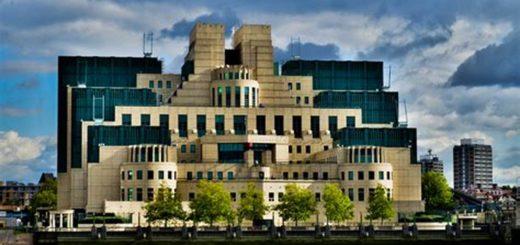EDITORIAL
No Mars ‘End Run’ for America To Get Back to Space Greatness
Dec. 14 (EIRNS)—When the future plans and missions of the United States in space come to be ruled entirely by its shrunken NASA budget and “commercial considerations,” then Americans’ must abandon their hopes to collaborate in the real future leaps of mankind in the Solar System. With the greatest opportunities for collaboration with the most dynamic other space-faring programs, America should be planning for its future in space scientifically, as did the great designers Wernher von Braun and Krafft Ehricke. They were not planning to a budget, but to the limits of human powers and progress.
A month ago the New York Times splashed on its front page a completely unworkable short-cut, supposedly to build “Trumpian” great projects of infrastructure by collecting user fees and partnering with private funds. Now the Times is promoting cheap Mars, by assembling a spacecraft in Mars orbit and then sending astronauts to orbit Mars in it for a while, and then come back.
The scheme came to the Times, not from a salesman like Elon Musk, but from an obviously demoralized scientist-astronaut, Dr. John Grunsfeld. But it is explicitly tailored to “fit in the existing NASA budget,” spending the space-station money, after that is abandoned, and when China, and perhaps India and others, are operating space stations on the way to development of the Moon.
The most fundamental scientific powers and interests of the United States are involved here, and are being trashed. Having let its space program atrophy, it cannot do a cheap “Mars end-run” around all the space-faring nations that are designing human exploration and development of the Moon, led by China’s plan to soon visit the Moon’s unique far side, where no human presence has yet been.
First, the health of all astronauts who might spend a weightless 18 months in such a Mars-orbiting voyage would be put in grave danger for the rest of their lives. The way to travel to Mars is by nuclear (fission and fusion power) propulsion systems which can potentially cut the trip to weeks. And if possible, to launch the trip from the Moon, not the Earth. Until then, obviously, robots should be in Mars orbit and on its surface.
Second, the path to fusion power breakthroughs is directly linked to space exploration—Moon industrialization—in scientific cross-fertilization of the two, and in the unique presence on the Moon of the ideal fusion reaction fuel, helium-3, if it can be converted and returned to Earth. Both need to be “crash programs,” together they can revolutionize human economy. The potentials for this were described in wonderful detail decades ago by Ehricke, who designed NASA’s Centaur upper-stage rocket among others.
Third, the “Strategic Defense of Earth” from potential asteroid or comet strikes is an essential part of mankind’s progress into exploration of the Solar System and Galaxy.
Finally, these frontiers of science and technology require the United States and European space programs to partner with, above all, China, India and Russia. This is where the opportunity lies for multiplying each nation’s potential, with those nations with the most rapidly expanding and dynamic space and fusion programs.
Sticking within the current budget is a mistake. The United States should attempt no “end-runs” in isolation; they will not work for mankind.
U.S. POLITICAL AND ECONOMIC
U.S. Intelligence Agencies Don’t Agree on Election Hacking
Dec. 14 (EIRNS)—U.S. intelligence agencies are backing off from the assertion that there was a Russian cyber intervention in the U.S. election, if any of them actually ever entertained it.
As the Veteran Intelligence Professionals for Sanity (VIPS) Dec. 12 statement points out, if there were hacking, it would be easy to trace who carried it out, what was hacked, and where it went.
Director of National Intelligence (DNI) James Clapper, who oversees the 17-agency U.S. intelligence community, believes there is no conclusive evidence that Russia was looking to help Trump. Three American officials told Reuters, “ODNI is not arguing that the Agency [CIA] is wrong, only that they can’t prove intent,” said one of the officials. One of the Office of DNI officials said the CIA conclusion was a “judgment based on the fact that Russian entities hacked both Democrats and Republicans, and only Democratic information was leaked. [It was] ‘a thin reed’ upon which to base an analytical judgment, the official said.
Just after the election, National Security Agency Director Adm. Mike Rogers said at the Nov. 18-20 Halifax International Security Forum, in Nova Scotia, that the release of hacked emails did not affect the 2016 presidential election: “I don’t think in the end the DNC document dump had the effect [the hackers] had hoped it would,” The Hill reported on Nov. 21.
U.S. Homeland Security Director Jeh Johnson said U.S. authorities “did not see anything that amounted to altering ballot counts or degrading the ability to report election results—nothing out of the ordinary—we see no evidence that hacking by any actor altered the ballot count or any cyberactions that deprived people of voting,” Johnson told the Washington Post Tuesday, Sputnik reported.
On Dec. 9, CIA chief John Brennan told the Washington Post that there was evidence that Russia had interfered in the election to boost Trump—though the Agency did not have any specific intelligence showing Russia’s involvement.
CNN reported that the FBI did not believe that there had been Russian hacking.
On Dec. 9, Sputnik reported that Obama had ordered a review of cyberattacks and “foreign intervention” in the U.S. Presidential election. Obama’s Homeland Security Advisor Lisa Monaco said the Administration would undertake a full review before Obama leaves office.
On Dec. 12, House Intelligence Committee Chair Rep. Devin Nunes (R-CA) rejected bipartisan calls for his panel to open a new investigation on the matter.
Trump NSA General Flynn Met Top Chinese Official in New York
Dec. 14 (EIRNS)—President-elect Donald Trump’s National Security Advisor designate Lt. Gen. Michael Flynn met with State Councilor Yang Jiechi, a high-ranking official of China, on Dec. 12 in New York City, the Chinese Foreign Ministry announced. Yang Jiechi, a former Foreign Minister and considered to be among the top officials in China, stopped over in New York on his way to South America.
The two sides exchanged views on China-U.S. relations and major issues of common interest, said Foreign Ministry spokesman Geng Shuang, on Dec. 12, Global Times reported.
Wu Xinbo, Director of the Center for American Studies at Fudan University, told Global Times yesterday that this is China’s attempt to build connections with Trump’s team, and paves the way for the next meeting.
The meeting is the first time China has publicly confirmed talks between China and Trump’s team, Reuters reported.
Wu said that the meeting between Yang and Flynn must have been arranged before Trump questioned the One China policy. Trump had said in a Sunday interview on Fox News that the U.S. should not be bound by the One China policy and should use Taiwan as a bargaining chip. Trump told Fox Sunday that he wants to get concessions from China on trade and investing in the United States.
THAAD System Deployment to South Korea, in Doubt, Called Threat to China by MIT Expert
Dec. 14 (EIRNS)—MIT nuclear physicist and arms control expert Ted Postol gave a talk at the Belfer Center at Harvard on the subject, “Is the United States Trying To Aim Its National Missile Defense at China?” It was a serious discussion on the current U.S. missile defense policy, holding that the lines being given about the THAAD (Terminal High Altitude Air Defense) system in South Korea don’t hold up to scientific rigor. The THAAD deployment is on a knife’s edge now, with the South Korean President who had agreed to the system out by impeachment, the opposition opposed, and the Obama White House trying to rush THAAD through before it can be stopped.
Postol attacked the Obama Administration for failing to respond to cooperation attempts with Russia, and hit U.S. policy as consistently saying one thing and doing another, so that governments—for example, China—look for such inconsistencies as dangers to them. He strongly praised Russian President Putin’s St. Petersburg Economic Forum speech on nuclear missile defense, calling it extremely well-informed and serious. This drew some tense responses within the Harvard audience.
Postol then gave a technical presentation on why the THAAD missile system would be ineffective against North Korea; the radar can be disabled with simple “decoy missile” methods. He said he had met with the South Korean government, and that they are not being briefed on the technical aspects of the system; for example, that it could be used integrally with the rest of the U.S. missile system with just a flip of a switch.
EIR raised signs of cooperative potential with China, such as the nomination of Gov. Terry Branstad as Ambassador to China, and China’s New Silk Road as the opportunity to overcome Obama’s war footing. Postol responded with hope that there will now be a positive change. He added that the new Defense Secretary nominee is being attacked for being a general, but that a military officer understands what it means to go to war, and will take it seriously.
THE NEW GLOBAL ECONOMIC ORDER
Zepp-LaRouche Keynotes Copenhagen Seminar on ‘Donald Trump and the New International Paradigm’
COPENHAGEN, Dec. 12 (EIRNS)—Today, Helga Zepp-LaRouche was the special guest speaker at a Schiller Institute/EIR seminar in Copenhagen entitled, “Donald Trump and the New International Paradigm.” Eight diplomats from six countries attended, including two ambassadors. There were nations from Western Europe, Southwest Asia, Western and Eastern Asia, and Africa. In addition, there were about 30 Schiller Institute members and contacts, as well as representatives of various Danish and international institutions.
Tom Gillesberg, the chairman of the Schiller Institute in Denmark, introduced Schiller Institute founder Zepp-LaRouche, describing her historical role in bringing about the New Silk Road policy. Her in-depth speech began with the revolution against globalization represented by the Brexit, the Trump election, and the Italian “No” vote. She gave an evaluation of the potential represented by some of the statements and appointments Trump has made so far, and then proceeded with a detailed discussion of the two conflicting paradigms in the world today. Zepp-LaRouche then uplifted the audience with the beautiful ideas of space scientist Krafft Ehricke and Renaissance philosopher Cardinal Nicholas of Cusa. She concluded with an appeal to those present not to act as spectators on the stage of history, but engage in the battle for the new paradigm with us.
Her speech in English, about 80 minutes long, is available on the Schiller Institute in Denmark website.
Afterwards, there was an intensive hour-long discussion, with questions from all of the different groups represented.
China Interested in Bioceanic Rail Route through Bolivia
Dec. 14 (EIRNS)—China’s Ambassador to Bolivia Wu Yunshuan has stated that his government is very interested in financing construction of the Central Bioceanic Railroad Corridor, the route which would traverse Bolivia, extending from the Peruvian port of Ilo on the Pacific to Brazil’s port of Santos on the Atlantic, the daily El Deber reported Dec. 13.
President Evo Morales has been organizing for this project for the past two years, and although he has said more than once that China was committed to financing it, no Chinese official had ever indicated that this was the case, until now. China is financing the northern bioceanic railroad from Brazil to Peru, first proposed by China at the 2014 BRICS summit in Brazil, and China Railways Construction Co. (CRCC) has completed a feasibility study for it.
Wu said that China is very interested in the railroad project and wants to “support, collaborate, and work with Bolivia” on it. “Both parties are discussing it. China has the technological and economic potential to collaborate with our brother nation Bolivia and build this project, which will be fundamental. It will be the project of the century and will benefit all the countries of the region,” the ambassador said. He conceded that China has been closely following discussion of the project, while also participating in the planning for the northern Brazil-Peru route. According to the daily Abya Yala Dec. 13, Wu said China can offer “up to” $40 billion in financing for the bioceanic railway, although he stipulated that this will depend on the scope and quality of the project—the level of modernization and technology involved—which could cause the amount to vary.
The estimated cost of the project is between $10 and $15 billion. Wu Yunshuan said that meetings would take place early next year to pin down details on the project.
Will Sakhalin-Hokkaido Tunnel Be on Abe-Putin Summit Agenda?
Dec. 14 (EIRNS)—According to a Dec. 12 article in the Japanese daily Asahi Shimbun, the “possibility of connecting Sakhalin with Hokkaido was included in the 18-item ‘priority projects’ announced by the Ministry for Development of the Russian Far East in October,” in meetings between Japanese Prime Minister Shinzo Abe and visiting Russian President Vladimir Putin. Prior to the Dec. 15-16 summit meetings (two separate meetings: one at Nagato in Yamaguchi prefecture on Dec. 15, and the other, Dec. 16 at the economic forum at Tokyo), the Russian government asked Japan “to support extending the Trans-Siberian Railway to Hokkaido,” Asahi Shimbun said.
In order to extend this railway to Hokkaido in Japan, it first needs to be linked to Sakhalin Island. As of now, Sakhalin is connected by ferry from Vanino, one of the biggest ports of the Russian Far East. Vanino is the terminal point for the Trans-Siberian Railroad and the Baikal-Amur Mainline. World Cargo News reported back in February 2014 that “Russia’s federal authorities have voiced their readiness to start building a rail bridge between Sakhalin Island and the mainland in 2016.” “The new project has been incorporated in the strategy of developing the country’s railways and Far East regions by 2025. The idea of laying a 17-km-long bridge from Lazarev on the Asian landmass to Pogibi on Sakhalin, as an element of the proposed 580-km-long Komsomolsk-on-Amur-Sakhalin railroad, was found to be the most promising of a total of 14 proposals,” the report said.
The more difficult and expensive proposition will be linking Russia’s Sakhalin to Japan’s Hokkaido. The tunnel would span roughly 40-45 km between Sakhalin’s Cape Crillon, in Russia, to Hokkaido’s Cape Soya. Running south from Hokkaido, the line would connect with the Seikan Tunnel between Hokkaido and Honshu. This would allow connections to the rest of the Japanese rail network. The proposed Sakhalin-Hokkaido tunnel is shorter than the completed 53.85-km under-the-seabed Seikan Tunnel.
COLLAPSING WESTERN FINANCIAL SYSTEM
With Rates Rising, Fed Starts Pushing Them Higher; What It Means
Dec. 14 (EIRNS)—The Federal Reserve gave its reaction today to the statements and expectations of a Trump Administration for major new spending on economic infrastructure, and on the military. Regional Fed presidents such as Boston’s Eric Rosengren had already stated in early November, that any such national investment plans would be met by the bank with three interest rate hikes in 2017. Thus the “surprising” announcement by Chair Janet Yellen today—of an immediate quarter-point rise in the discount rate now, to be followed by three more next year—should not have been a surprise. It represented the Fed’s clearly indicated reaction to any move to end six years of budget and credit austerity across the trans-Atlantic region: Try to stop it. The Fed’s new push up on short-term rates will accelerate the rise in long-term rates which has already begun, making any new U.S. Treasury borrowing rapidly more expensive.
To questions after the announcement, Yellen answered obliquely but implied the Fed’s opposition. A new investment program “is clearly not needed to achieve full employment,” she said; and “the ratio of debt to GDP must be kept in mind.”
At the same time, the Fed’s new economic growth forecasts for the United States, issued today, still see no annual growth over 2% through 2019, and below 2% for most of the next three years. In current fact, U.S. industrial production in November fell by 0.6% from a year earlier, making the 15th consecutive month of such year-to-year drops; production is lower now than in the Fall of 2014.
Yet, while “forecasting us” into such a continued no-growth future, Chair Yellen and the Fed still wanted to “quietly” enforce budgetary and Federal credit austerity. Zero rates were for the benefit of large banks and large multinational corporations only; not for savers, employees, small businesses, nor governments which try for rapid economic development.
In Europe, rates are still near zero or below. Handelsblatt reported today that the 30 big German corporations in the “DAX Index” have increased their debt/cash-flow ratio by almost 50% since 2008, drastically increased their stockholder dividends and repurchases of their own stock, and their takeovers; increased their “risk appetite,” and decreased their capital investments.
A few corporations, like consumer-goods giant Henkel, have even been borrowing at negative rates. So has Finance Minister Schäuble—as long as he used it to balance the budget only!
One example suffices: Bayer’s just-approved takeover of Monsanto will take €50 billion in borrowing by Bayer in late 2017. If at the 1% at which Bayer has been borrowing, the new annual debt service will be €1 billion; if at 5%, it will more than wipe out even Bayer’s record 2015 profit of €4.1 billion. It was the failure and cancellation of exactly such large leveraged buyouts as this, which was an early- to mid-2007 harbinger of the failure of investment banks and the blowout of the financial system.
Government’s ‘Black Zero’ Policy Increasing Poverty, Homelessness in Germany
Dec. 14 (EIRNS)—The most recent issue of the annual “Poverty Report” published by the German government, shows that indebtedness, homelessness, and other aspects of poverty continue increasing—a direct result of the “black zero” austerity budget-balancing policy of the Finance Ministry. More than one out of five children live under “risk of poverty,” because their families have less than 60% of the average minimum income; one out of every 20 children already lives in poverty with no hope of getting out of it.
More than 2 million households—that is, about 4 million citizens—are hopelessly over-indebted; and the number of registered homeless has increased from 80,000 five years ago, to 330,000 now.
The new report, which only states the situation of 2015, will, however, not be published in full until the beginning of 2017.
STRATEGIC WAR DANGER
U.S. ‘Adjusts’ Arms Sales to Saudi Arabia
Dec. 14 (EIRNS)—The Obama Administration has finally responded to the Saudi targetting of civilians in Yemen with a fig leaf of a change to U.S. policy on arms sales to Saudi Arabia. According to an anonymous official, the U.S. has decided to limit sales of certain arms and munitions to the Saudis out of “frustration” about the Saudis’ ”careless” targetting in Yemen. The change was made after a review of U.S. military aid following the Saudi bombing of a funeral gathering in October in the capital, Sana’a, that killed upwards of 140 people.
“We’ve decided not to move forward with some foreign military sales cases for air-dropped munitions, PGMs (precision-guided munitions),” one official told Reuters. “That’s obviously a direct reflection of the concerns that we have about Saudi strikes that have resulted in civilian casualties,” the official said. At the same time, the Obama Administration has decided to step up cooperation with the Saudis on the security of their southern border, across which the Houthis keep attacking Saudi military assets. What is also not stopped is the air refueling of Saudi strike aircraft by U.S. tankers.
“For now that’s not going to be touched. Again, the review could continue and people could make a different decision in the coming weeks,” the official said. This is all the result of a review begun after the Saudi bombing of the funeral in October. Other sales, such as the sale of CH-47F helicopters announced by the State Department last week, are going ahead.
One official stressed to the Washington Post that the minuscule changes aren’t intended to be punitive but rather “corrective.”
“We have to be careful not to cut back on things that serve our interests in the process of trying to cut back on things that don’t serve our interest,” the official said. With “the combination of the plus-ups and the curtailment, we hope that that will send a message that this is not an inimical, hostile gesture.”
Rep. Ted Lieu (D-CA), who has been an implacable opponent of U.S. arms sales to Saudi Arabia, given the evidence that the Saudis have committed war crimes, rejected the changes. “It is completely unacceptable that the United States continues to engage in military operations with the Saudi operation that is resulting in what appear to be multiple war crimes,” said Lieu.
Meanwhile, the Sana’a government has accused Great Britain of war crimes for its sales of cluster bobs and Storm Shadow cruise missiles and the like to the Saudis and their coalition fighting again Yemen, with the knowledge that they are used against civilians. Said one woman to Sky News: “We thought Britain was a friend,” she said. But “They’re committing crimes: killing children and pregnant women.”















